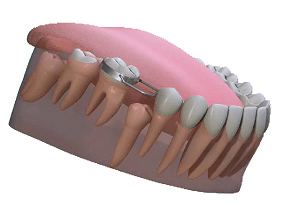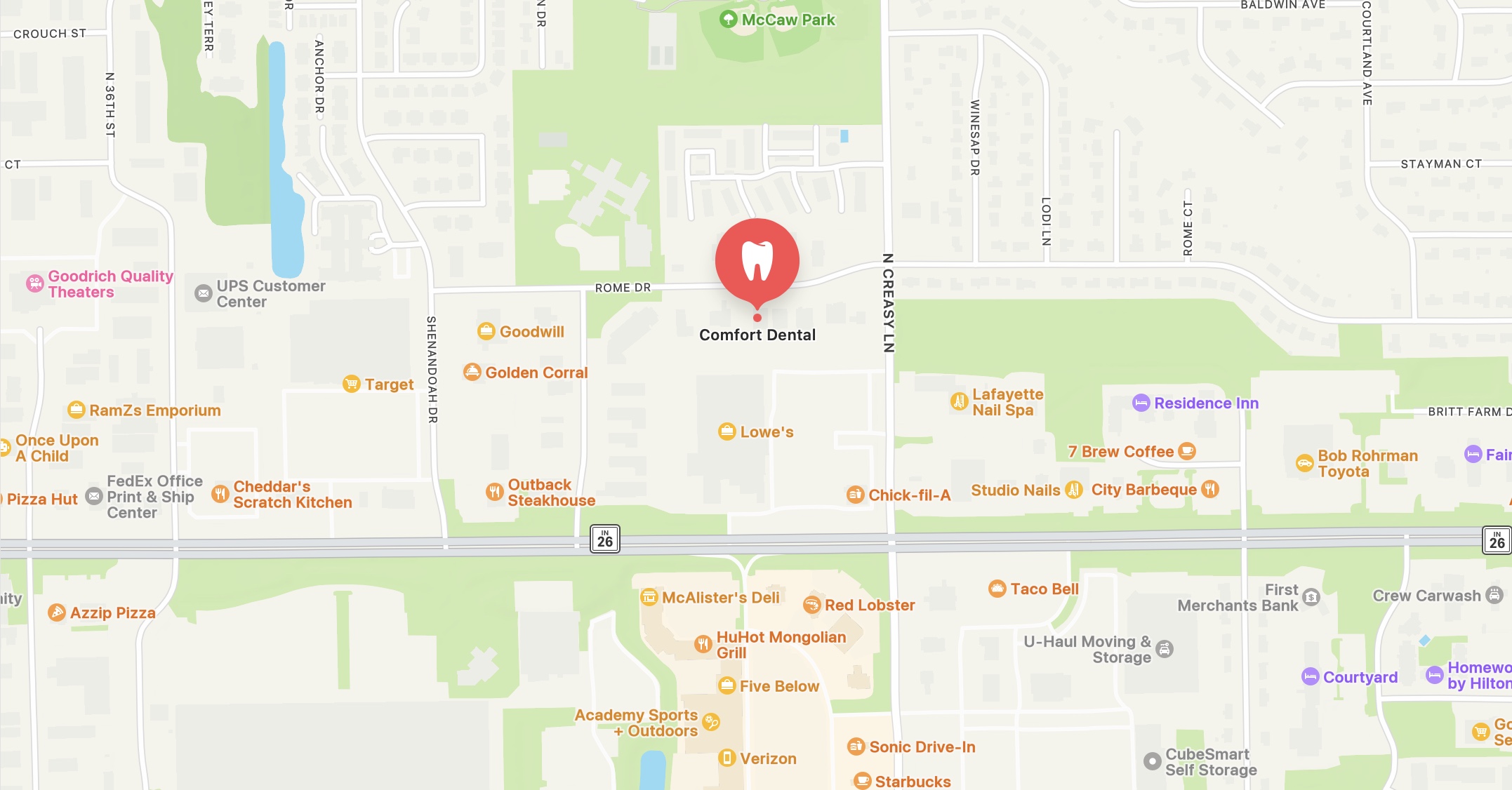 YOUR CHILD’S BABY TEETH AREN’T JUST FOR CHEWING. Each primary tooth also acts as a guide for the permanent tooth that replaces it. If a baby tooth is lost too early, the permanent tooth loses its guide. Space maintainer to the rescue!
YOUR CHILD’S BABY TEETH AREN’T JUST FOR CHEWING. Each primary tooth also acts as a guide for the permanent tooth that replaces it. If a baby tooth is lost too early, the permanent tooth loses its guide. Space maintainer to the rescue!
Space maintainers help prevent the permanent tooth from drifting or erupt incorrectly into the mouth. Without the proper tooth spacing reserved, neighboring teeth can also move or tilt into the space.
HOW CAN COMFORT DENTAL HELP?
If a primary tooth is lost too early, we can help by “maintaining” this space with a custom made appliance called a space maintainer, which keeps the space open until the permanent tooth comes in.
Primary teeth can be lost too early for several reasons:
- They can be knocked out in a fall or other accident – help prevent this with a mouthguard.
- They may need to be extracted because of severe decay.
- They may be missing at birth.
- Some diseases or conditions can lead to early tooth loss.
.
Types of Space Maintainers
A space maintainer is made of stainless steel or hard acrylic. Some space maintainers are fixed or cemented into the child’s mouth, while others are removable.
 There are several kinds of space maintainers.
There are several kinds of space maintainers.
- A band-and-loop maintainer is a common choice at Comfort Dental and is made of stainless steel wire. It is held in place by a crown on the tooth next to the space or by an orthodontic-type band around one of the teeth next to the open space. A wire loop is attached to the band or crown. The wire loop holds the space open. This allows the permanent tooth enough space to come into the mouth without crowding.
- A lower wire known as a “lingual arch” is used when back teeth are lost on both sides of the lower jaw. “Lingual” refers to the inside or tongue side of the teeth. This type of space maintainer uses bands wrapped around a tooth on either side of the mouth behind the missing teeth. A wire connected to the bands runs along the inside of the bottom teeth.
- A removable space maintainer looks like a retainer. It uses artificial teeth or acrylic blocks to fill in the space or spaces that need to stay open. This type of space maintainer often is used when the space is obvious to other people. Removable space maintainers work well in older children who can reliably follow directions about caring for this appliance.
.
Two Reason a Space Maintainer May Be Unnecessary?
- If one of the four upper front teeth is lost early, the space will stay open on its own until the permanent tooth comes in.
- If the permanent tooth will soon erupt, we may decide not to use a space maintainer unless your child needs braces and space is a critical issue.
.
 Caring for Your Space Maintainer
Caring for Your Space Maintainer
The space maintainer may feel unusual at first. But after a few days, your child will probably forget about it. A removable space maintainer with replacement teeth can affect speech until your child gets used to it.
It’s important for your child to brush regularly to keep the gum tissue healthy. A child with a fixed space maintainer needs to avoid chewy candy and gum. They can loosen the band or get caught in the wire arm.
Finally, your child shouldn’t push on the space maintainer with his or her tongue or fingers. That could bend or loosen it.
Follow-Up Care for Space Maintainer
Dr. Brucken and Dr. Stubbs will follow the progress of the incoming permanent tooth by taking X-rays regularly. When the tooth is ready to erupt, the space maintainer is removed.
If there is no permanent tooth, the space maintainer will typically be used until your child’s growth is completed (age 16 to 18). Then we will place a bridge, implant or removable partial denture in the space.
Comfort Dental wants to ensure our patients of all ages have the best care to ensure healthy smiles for a lifetime. We hope to see you in Lafayette soon!





